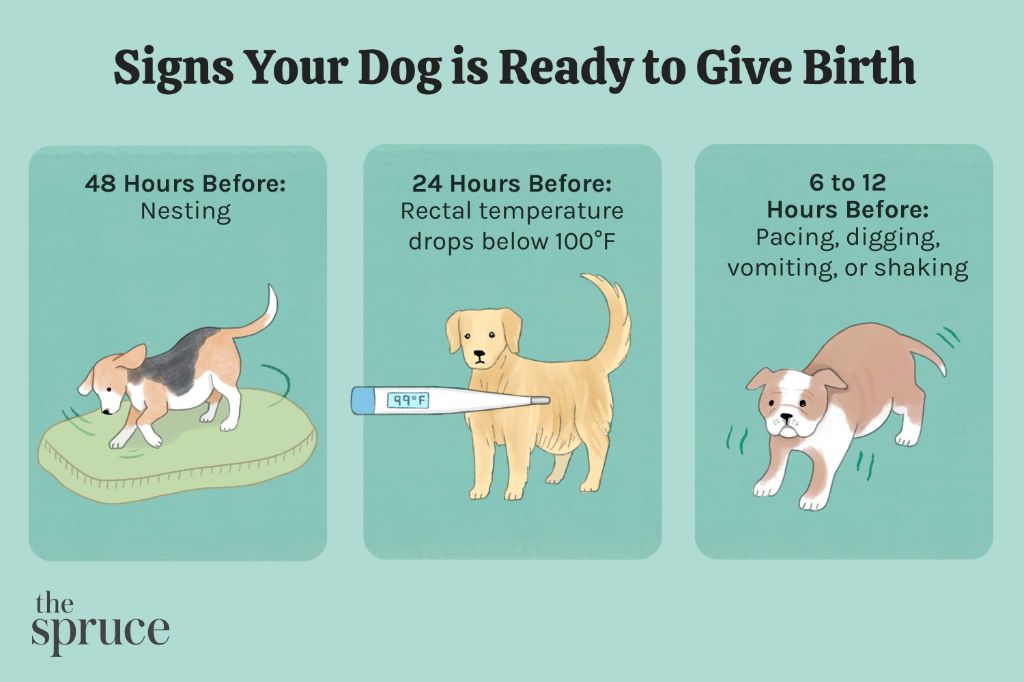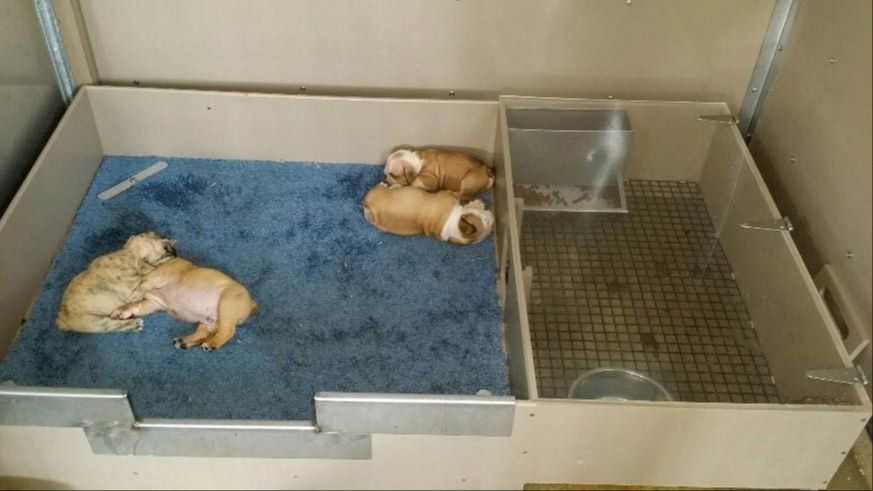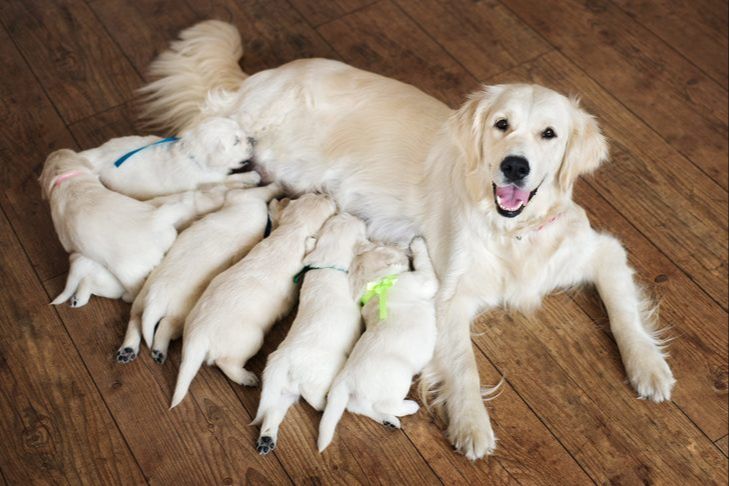Typical Canine Gestation Period
The typical gestation period for a pregnant dog is approximately 63 days from conception to birth. According to the American Kennel Club, the normal gestation range is anywhere from 57-65 days, with 63 days being the average [1]. This period is similar in length to other canine species like wolves, foxes, and coyotes.
Some key points about the typical 63 day canine gestation period include:
- It begins at the point of successful mating and fertilization of eggs.
- There can be some natural variation of a few days plus or minus.
- Proper prenatal care can help puppies arrive on schedule.
- Various factors like the mother’s health or number of puppies can affect length.
- An early delivery before 58 days or a late delivery after 68 days may indicate problems.
Overall the normal window for a dog’s pregnancy is 57-65 days, with 63 days from conception being the average duration.
Why 9 Weeks?
Even though the typical canine gestation period is shorter than 9 weeks, it’s often described as lasting about 9 weeks or 63 days. This is because gestation is measured from the first day the female dog ovulates and releases an egg, which is about 9 weeks before the puppies are born.
The reason the gestation period is calculated from ovulation rather than from breeding is that sperm can survive for up to 7 days in the female reproductive tract. Therefore, puppies can be conceived several days after mating occurs.
Measuring from ovulation provides a more accurate timescale for the pregnancy. Counting from the first mating, gestation could vary from 58 to 65 days depending on when actual conception occurred.
There is also some natural variation in the length of pregnancy depending on the breed. For example, larger breeds like Great Danes tend to carry puppies closer to 65 days while smaller breeds like Chihuahuas can deliver as early as 58 days.
Early Signs of Pregnancy
The earliest signs that a dog is pregnant often appear between 3-4 weeks into the pregnancy. Some of the earliest physical changes and behaviors to watch for include:

- Decreased activity levels and increased tiredness as early as 2 weeks into the pregnancy (Source)
- Slight swelling or pinkening of nipples as early as 3-4 weeks (Source)
- Morning sickness or vomiting as early as 3-4 weeks (Source)
- Increased appetite around 3-4 weeks as the dog’s caloric needs increase (Source)
- Weight gain becomes noticeable around 4 weeks (Source)
These early signs can be subtle, but owners who know what to look for may detect hints of pregnancy before confirming it with an ultrasound or x-ray later on.
Stages of Canine Pregnancy
Like human pregnancies, canine pregnancies last about 9 weeks and occur in 3 trimesters of around 21 days each.
In the first trimester, the dog’s eggs are fertilized and embryos implant into the uterine lining. There are no obvious external signs during this stage, but you may notice the dog’s nipples growing in preparation for nursing. An ultrasound scan performed by a vet can confirm pregnancy at around 3 weeks (https://www.campbellrivervet.com/expect-dog-expecting/).
During the second trimester, the embryos develop rapidly into fetuses with limbs, major organs, and skeletal structures. The dog’s belly will start expanding, and morning sickness may occur. An ultrasound scan can now detect heartbeats and monitor fetal growth (https://www.webmd.com/pets/dogs/signs-dog-pregnant).

In the third trimester, the puppies grow rapidly and begin moving inside the uterus. The mother dog’s belly becomes very enlarged. Prenatal vet checkups help monitor fetal viability and detect potential complications like calcium deficiency. Preparations for whelping should begin, like choosing a safe space and gathering supplies.
As the pregnancy nears 9 weeks, the puppies reposition for birthing, with their front legs tucked under their chests. The mother dog may lose her appetite and seem restless as early labor begins. Clear vaginal discharge signals that whelping is imminent within the next 24 hours.
Prenatal Care
Proper prenatal care is crucial for ensuring your pregnant dog remains healthy throughout her pregnancy and delivers healthy puppies. Here are some key considerations for prenatal care:
Nutritional needs – Pregnant and nursing dogs require about 1.5 times more food intake than normal. Feed a high quality puppy food or veterinary diet formulated for pregnant/nursing dogs, split into multiple smaller meals throughout the day. Ensure adequate calcium intake. Avoid overfeeding to prevent excessive weight gain. Provide plenty of fresh water at all times. [1]
Exercise considerations – Regular short walks and light playtime are good. Avoid intense exercise that overexerts pregnant dogs, especially in the later stages of pregnancy. Provide a quiet nesting area where the expectant mother can rest comfortably. [2]
Veterinary visits/tests – Schedule regular vet checkups to monitor the pregnancy. An ultrasound around day 25 can confirm pregnancy and estimate litter size. Additional tests check for potential complications like gestational diabetes. Discuss any supplements or medications that may be recommended. [3]
Preparing for Whelping
Preparing the whelping area and having supplies on hand is crucial in order to provide a safe, clean environment for the birthing process. Owners should prepare the whelping area 1-2 weeks before the dog’s due date.
To set up the whelping area, designate a quiet, private room in the house that can be closed off from other pets and children. Place whelping or puppy pads lined with newspaper over a portion of the floor. You’ll need an area large enough for the mother dog to lie down and give birth comfortably. The area should be kept warm at around 85 degrees Fahrenheit. A whelping box gives a designated space, but make sure the mother can come and go freely and is not locked inside.

Owners will need the following supplies on hand for whelping:
- Extra blankets, towels and sheets
- Newspaper
- Whelping or puppy pads
- Clean bowl for water
- Non-latex disposable gloves
- Unwaxed dental floss or sterile thread
- Scissors
- Bulb syringe
The owner should monitor the pregnant dog closely leading up to birth and be prepared to act as a midwife during the whelping process if needed. Having emergency contacts on hand like a 24-hour veterinary hospital is also important in case intervention is required (AKC).
The Whelping Process
What to expect during labor/delivery: The first stage of labor involves the cervix dilating and contractions beginning. This stage can last 6-12 hours. You may notice nesting behavior, panting, shivering, restlessness, and a drop in rectal temperature below 100°F. As contractions strengthen and the cervix dilates to 2-4 cm, the second stage of labor begins. This involves active abdominal contractions, pushing, and delivery of the puppies. Puppies are usually delivered every 30-60 minutes. However, some dogs can deliver an entire litter within 20-30 minutes.
It’s important that puppies begin nursing soon after birth to receive colostrum rich in antibodies. Make sure each puppy is breathing and nursing. The mother will bite and tear the umbilical cord and clean the puppy. If she doesn’t do this within a few minutes, you may need to wipe fluids from the puppy’s face and pinch and tie off the cord with sterile thread.
Potential complications during whelping include uterine inertia, obstruction of the birth canal, uterine rupture, eclampsia, mastitis, metritis, and retained placenta. Contact your veterinarian if you notice signs of distress in the mother, prolonged labor, or other abnormalities. It’s recommended to take the mother and puppies to the vet 24-48 hours after delivery for a health check-up.
Sources:
https://www.purina.co.uk/articles/dogs/health/pregnancy/labour-and-giving-birth
After Welping Care
Once the puppies have been born, it’s crucial to provide proper aftercare for both the mother dog and her newborn puppies. The mother will be exhausted after the birthing process and require special attention as she recovers. The puppies will be completely helpless and fully reliant on their mother and human caretakers.
For the mother dog, the first priority is allowing her to rest and recover from the strenuous labor [1]. Provide her with a comfortable nesting area away from loud noises or activity. Monitor the mother closely for signs of serious bleeding or infection, and contact your vet if anything seems abnormal. Offer the mother water, high-calorie food, and praise/affection over the next few days as she regains her strength.
The puppies will spend their first few weeks nursing and sleeping. Make sure the mother has enough milk by checking the puppies’ full bellies. Weigh the puppies daily to ensure they are gaining weight [2]. Provide a warm environment around 90°F for the puppies. Gently clean any placental residue off the puppies if the mother does not do it herself. Handle the newborn puppies minimally during these fragile first weeks.

Over the next several weeks, monitor nursing and make sure the mother is caring for the puppies properly. Supplement with bottle feeding if necessary. Pay close attention to the puppies’ health and contact a vet immediately if any issues arise. With proper aftercare, both the mother dog and puppies will recover quickly from the whelping process.
Other Considerations
There are a few other important considerations when your dog is pregnant.
Spaying Considerations
Some owners may consider spaying their dog during pregnancy. However, this carries risks and is not recommended past 4 weeks into the pregnancy ([1]). The safest option is to wait until after the puppies are weaned before spaying.
Signs of Complications
Contact your veterinarian immediately if you notice any of the following signs which could indicate complications like an infected uterus, placental infections, uterine inertia or eclampsia: ([2])
- Vaginal discharge with a foul odor
- Lack of appetite
- Depression
- Fever
- Vomiting
- Diarrhea
- Abnormal pain or straining during labor
Myths vs Facts
There are many myths surrounding dog pregnancy. For example, some believe a dog knows you’re pregnant and will protect you, or that natural matings produce the healthiest puppies. However, these are not backed by scientific evidence ([3]). It’s important to rely on your veterinarian for facts-based guidance.
Summary
In summary, the typical canine pregnancy lasts about 9 weeks or 63 days from the time of breeding to delivery of puppies. This is broken down into two months of pregnancy and an average of 63 days of gestation. It’s important for dog owners to provide proper prenatal and post-whelping care to help ensure the health of the mother and her puppies. Proper nutrition, exercise, veterinary care, and a whelping area are key in having a smooth pregnancy and delivery.
Knowing the typical timeline and stages of canine pregnancy can help owners prepare and care for their pregnant dog. Monitoring their dog for signs of pregnancy, like appetite changes and weight gain, provides important insights. As dogs near delivery, temperature drops and nesting behaviors indicate puppies are coming soon. Attentive aftercare for the mother and routine vet checks for puppies are vital as well. While canine pregnancies are relatively short, each week matters in giving puppies the best start.
